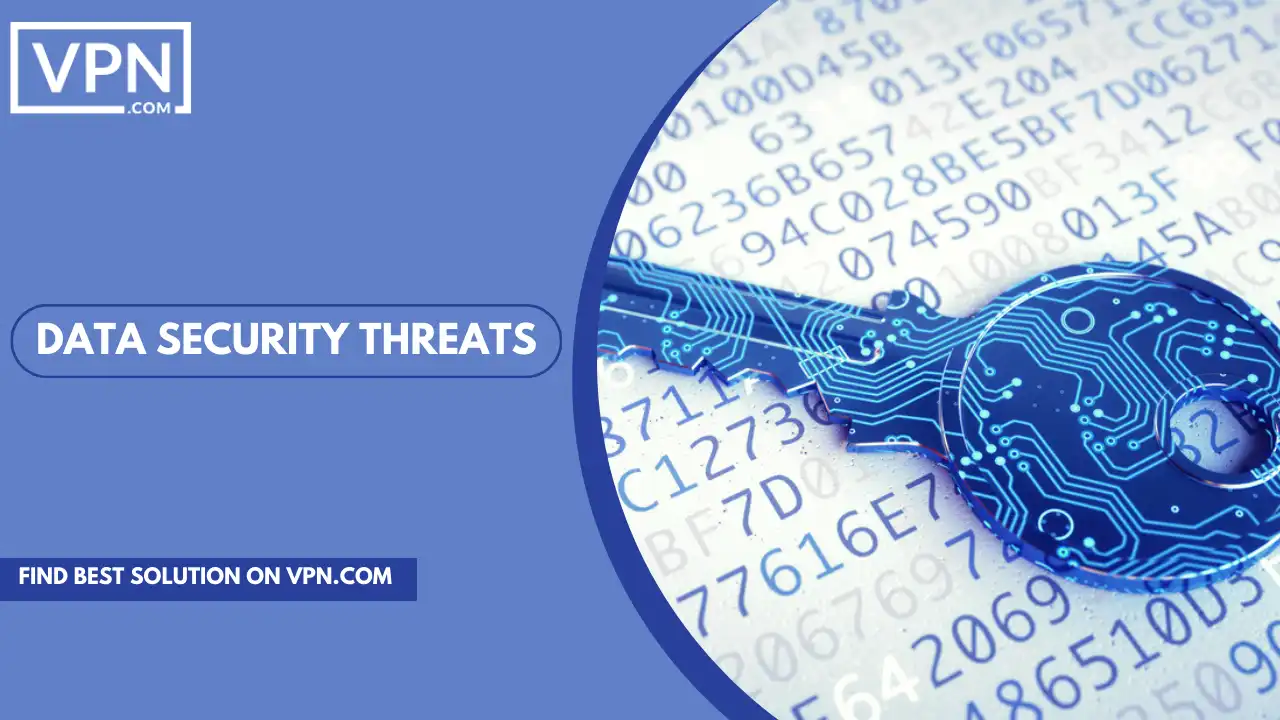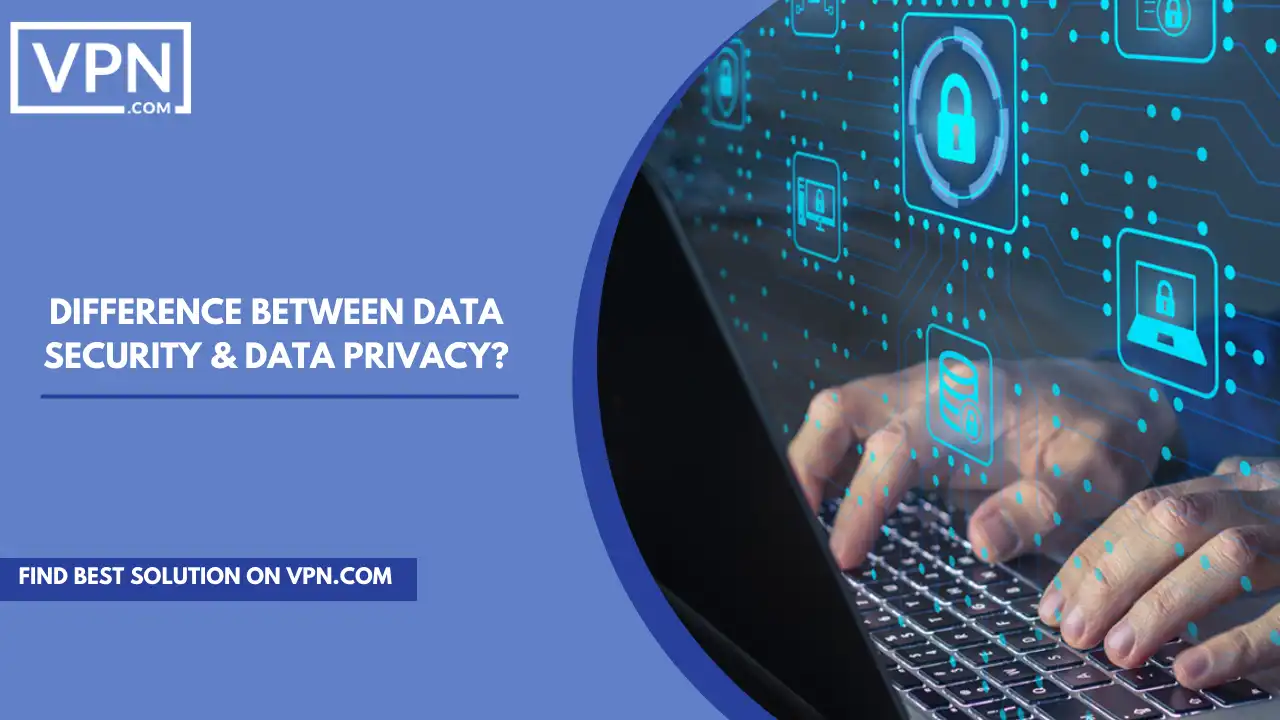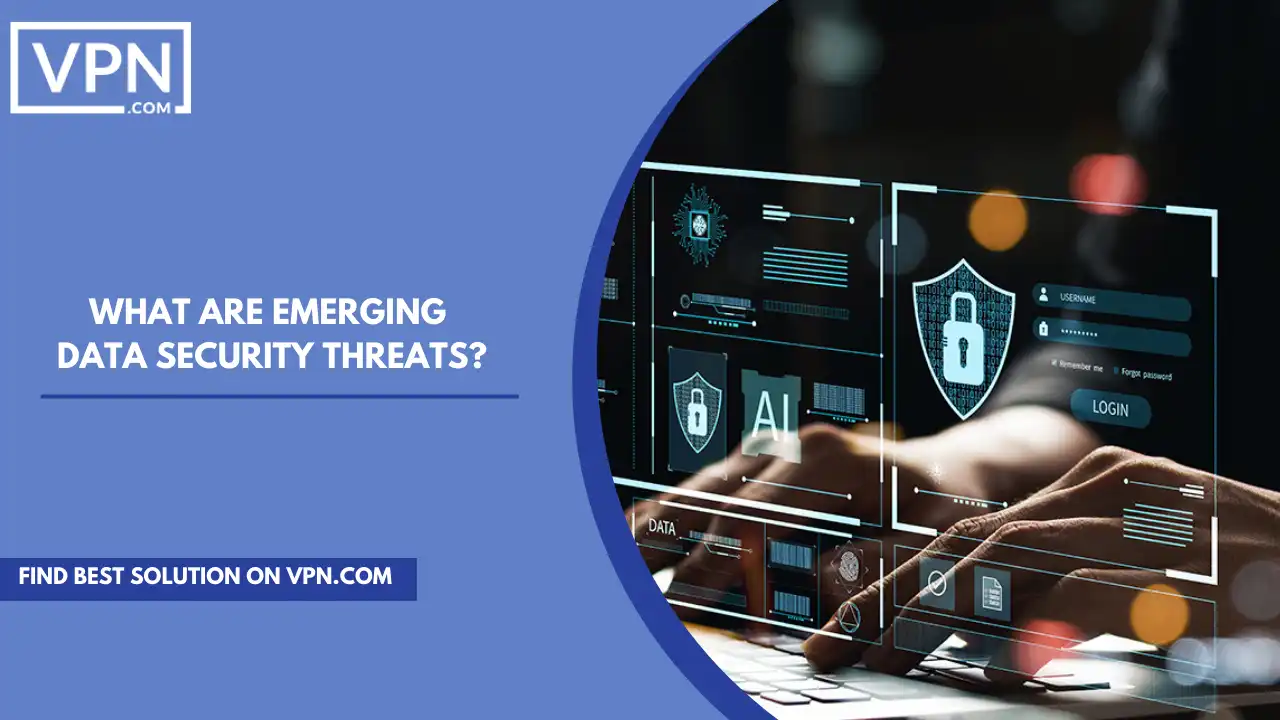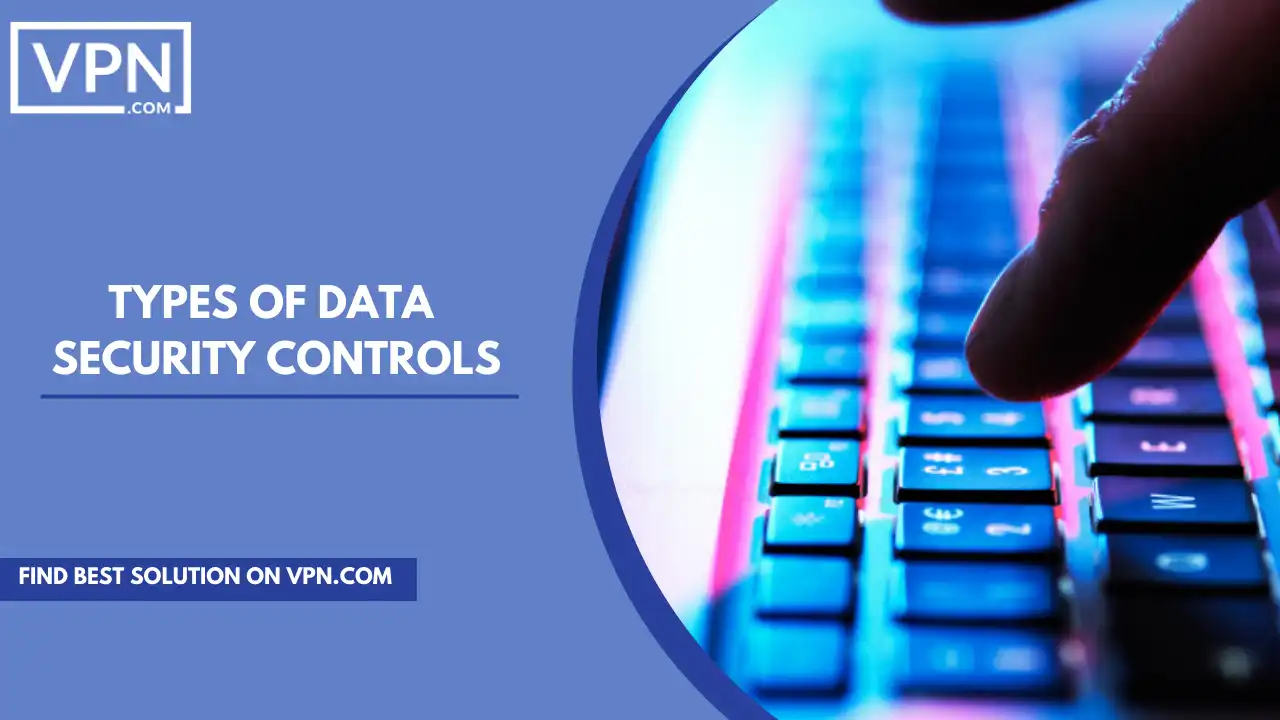Data Security Threats: Everything You Need To Know

We all know what role data security plays in our life. We can not overstate the importance of data security as it plays an important role in protecting sensitive information from people who don’t have any authorization and from any kind of misuse.
So what do we actually call a data security threat? It can be defined as any intentional or accidental event that might put in danger your confidentiality, integrity or availability of the data. It can come from various sources such as hackers, insider threats or even a natural disaster.
With time more companies are relying on data driven decisions. This means that the storage of sensitive information is growing unexpectedly. It will ensure that your important data security has been taken care of.
There are many cyber criminals out there who might be out there to lay hands on your single weakness. Once they do they can get unauthorized access to confidential data. It can lead to financial damage, harming your reputation or even legal consequences.
So what is getting us in danger nowadays? It is the more use of interconnected devices and networks that exposes data to more vulnerability. It means that we need to take more data security measures in that regard. By effectively taking care of data security threats any organization can protect their information assets. This way they can maintain the trust of their customers, employees or stakeholders.
What Is Data Security?
Making sure that organizational data stays safe is what we call data security. We like to think of it in three parts: keeping things secret (Confidentiality), making sure nothing gets messed up (Integrity), and ensuring that people can always get the information that they need (Availability). It is like a safety plan commonly known as the CIA Triad.
Confidentiality means stopping the wrong people, whether inside or outside the organization from getting to important data. We use different security tricks for this; like protective networks, permission systems (like role-based access control), data encryption, and multi-factor authentication.
Next is Integrity, which is about stopping data from accidentally changing or disappearing. It could be a mistake or someone trying to cause trouble. To keep things steady, we use digital signatures and encryption.
Finally, there is Availability, making sure important data is always ready for the people who need it. Whether they are inside or outside the organization. The IT team takes care of this by keeping everything running smoothly and fixing things fast if something goes wrong.

Get Started w/ NordVPN Today
- Top-rated VPN for OS unknown
- Ultra-fast speed in US in 2024
- Save 69% off with VPN.com Discount
- Plans starting at $2.99/month
GUARANTEE
Why Is Data Security Important?
The Ponemon Institute checked out how much trouble a data breach causes in the USA and found it usually hits about $8 million. On average, around 25,575 user accounts get tangled up in these incidents. So, it is not just about losing money; it also messes with customer trust and a company’s good name.
Did you know that lawsuits, deals, and penalties tied to data breaches are going up? Governments are making stricter rules about data privacy. People in places like the EU, California, and Australia have more rights now, thanks to GDPR, CCPA, APP, and CSP234.
Companies in certain industries have to deal with extra rules, like HIPAA for healthcare people in the USA and PCI/DSS for those handling credit card data.
Over the last ten years, security threats like social engineering, ransomware, and advanced persistent threats (APTs) have been causing more trouble. These are not easy to defend against and can seriously mess up a company’s data.
Fixing data security isn’t a quick job. Just adding more security tools won’t do it. The IT and info security teams have to really think and work together to handle the challenges. They also need to look at how much the current security measures cost and how well they are doing. Also, it’s worth investing more to make things even safer.
What Is the Difference Between Data Security And Data Privacy?

Keeping computer data private means figuring out what information can be shared (not-so-secret stuff) and what needs to not need to. There are two main parts to keeping data on the down-low:
- Controlling Access: It is like making sure only the right people can get to the data. They have to prove who they are and have the green light to see only the stuff they are supposed to.
- Data Shielding: Even if someone sneaky manages to get to the data, we want to make sure they can’t snoop around or mess it up. This involves using encryption, which will scramble the data unless you have a special key. There are also tools to stop people from moving important data outside the group.
Data security and data privacy share a lot of similarities. The things we do to keep data private are part of how we make sure data stays safe in a group.
The main difference is that data privacy is mostly about keeping data confidential (a fancy word for secret), while data security is more about stopping bad things from happening.
For instance, using encryption might be enough to keep things private but it might not fully protect against someone messing with the data; like erasing it or making it unreadable even for those who should have access.
What Is the Difference Between Data Security And Cyber Security?
Making sure your information stays safe is like putting a virtual fence around it; yes that is data security. Now, cyber security? That is the big savior who is protecting everything digital; like your networks, gadgets, and data.
So, to break it down: data security is about keeping your data hidden, unchanged, and ready to roll when you need it. It is the no entry sign for unauthorized people. Cyber security, on the other hand is the shield for the whole digital universe which protects it from online cybercriminals.
Even though they each have their jobs but data security and cyber security are like best friends. A solid plan to keep everything digital safe should have steps for data security. And when an organization’s overall cyber security game is strong then you can bet data security is a big part of it.
What Are Emerging Data Security Threats?

So now we all know that our digital world is evolving daily, and with this evolution, the types of data security threats are also increasing. This is why dealing with daily data security threats is becoming difficult. You can take, for example, Ransomware; it is a hazardous form of malicious software that will use your data as a hostage and then severely affect your company and risk countless people’s privacy. Is this what you want?
There is another threat that we know as APT, representing a significant data security threat category. Yes, we are talking about Advanced Persistent Threats. They are also a great challenge nowadays and can be more in the future. They will use a sneaky way to get into your network for a long time and then use different ways and tricks to achieve their wrong goals.
However, at the same time, IoT “Internet of Things” is leading to a new wave of attacks, introducing new types of data security threats. Hackers will take advantage of this weakness as a smart device to access important information and disrupt essential services without taking any permission.
Also, there is a concern with insider threats. In this, people within an organization who have the proper access can get around with even the most robust security measures. Sounds scary, right?
Equally problematic are zero-day exploits. They use software vulnerabilities that were not known before to break into their targeted systems. It can be used to mess with their safety and secrecy.
We are talking about all these security threats because this way, you will understand how important it is for any organization to stay watchful and develop new ways to protect their company from the ever-evolving world of cyber threats. However, let’s discuss emerging cybersecurity threats in detail:
Ransomware
Ransomware is a nasty software created to exploit data security threats and get money from those who fall into the trap. It has quickly become a cybercrime that will cause many problems worldwide as a formidable data security threat. How does this software work? They usually get into the user’s computer, lock up their files, and then ask for money for the key to unlock their files.
Recent cases, like the well-known WannaCry and NotPetya attacks, are the perfect examples of how ransomware, a data security threat, can create massive chaos. They can even shut down entire networks, including hospitals and large companies.
So, to stop and deal with these attacks effectively, companies need to prioritize cybersecurity against such data security threats. What does this include? It includes having vital threat intelligence, thorough security checkups, and training programs for the employees so they know about the latest threats and ways to deal with them.
However, if a Ransomware attack happens, having regular data backups and getting help from cyber forensics professionals can guide the organization through the arduous recovery process. It will reduce financial and reputational harm caused by these data security threats.
SQL Injection
Some bad actors use SQL injection (SQLi), a data security threat, to sneak into databases, snatch data, and do things they shouldn’t. They pull it off by slipping nasty code into what looks like a harmless database query, exploiting a common data security threat.
SQL injection messes with the SQL code by adding special symbols to what a user puts in, making the query do something it shouldn’t. Instead of regular user input, the database deals with code that helps the attacker. This can spill out customer info and secret stuff or hand over control of the database to the attacker, which can cause big problems.
The weak spot for SQL injection, a critical data security threat, is often shoddy coding practices. If coders use safe methods for taking in user inputs, which are there in all the latest databases, SQL injection can be easily avoided.
Advanced Persistent Threats
Advanced Persistent Threats, or APTs, are super complex cyber-attacks usually carried out by well-funded groups linked to states or organized crime, representing a severe category of data security threats.
Their main goal? It is to cause a lot of damage or steal your important information. Why do APT attacks stand out among other data security threats? They stand out because they are sneaky and stick around for a long time without getting caught. They can also change to avoid detection while staying in the targeted systems.
One of the recent examples of APT attacks is the SolarWinds breach, a significant data security threat that affected many US government agencies and private organizations. Another example is the DarkHotel campaign, targeting high-profile individuals worldwide.
So, if you want to stop and deal with APT attacks, you need robust security plans. This might include many layers of defense, gathering and sharing information about threats, ensuring that your employees know about security, and regularly checking security measures.
Also, having a clear plan for what to do when an APT attack happens is very important to limit how much it affects everything, thus effectively responding to such sophisticated data security threats.
Internet Of Things (IoT) Attacks
The Internet of Things is changing how we connect with the world by putting the Internet into everyday objects to share and get data. But this connection will also bring many security issues, escalating data security threats and making IoT devices more open to all cyberattacks.
Lately, we have seen significant IoT attacks like the very well-known Mirai botnet, a prominent example of data security threats in IoT. It infected thousands of devices in 2016 to launch a massive Distributed Denial of Service (DDoS) attack.
So, to stop and deal with these IoT attacks, businesses and people need to take their security seriously. It means updating software, using strong passwords, splitting up networks, and teaching its users about staying safe against data security threats.
By ensuring IoT devices are secure, we can use their potential to improve our lives, effectively protecting against these dire cyber threats.
Insider Threats
Insider threats are the security risks that come from within an organization, a critical aspect of data security threats, often involving employees, ex-employees, contractors, or business partners who can access confidential information, systems, or assets. These people can be a huge problem because they know how the organization works and where its weak points are, making them potentially significant data security threats.
Insider threats can also be intentional, meaning the person intends to harm, or accidental, happening because of mistakes or carelessness. Recently, we have seen some well-known examples of insider threats, like when Edward Snowden leaked secret NSA documents or the hack at Sony Pictures.
To stop and deal with insider threats, organizations need to have strong security rules. What can it include? It can consist of training employees, controlling who has access to what, keeping an eye on things, and having plans in case something goes wrong. This will protect essential data and systems from potential harm within the organization, mitigating these internal data security threats.
Security Misconfiguration
When the security settings of a computer system aren’t set up right or are just left with the default username and password, that’s a prime scenario for data security threats, known as a security misconfiguration.
It means the system setup doesn’t follow the security rules in standards like CIS benchmarks, the OWASP Top 10, or specific compliance requirements, leading to heightened data security threats.
If whoever’s in charge, be it an administrator or a developer, doesn’t get the security settings right for an app, website, server, or computer, it is like leaving the door wide open for attackers.
Misconfigurations are a big deal, especially in the cloud, and they are not exclusive to on-premises setups either. They are one of the significant security threats, and the consequences are no joke.
Think of massive data breaches, temporary business setbacks, harm to your reputation, loss of money, legal troubles, and fines from regulators. This severe deal can mess things up in a big way due to these data security threats.
What Types Of Data Security Controls We Should Use?

Here are some of the types of data security controls that can be beneficial for you:
Access Controls
Access controls are like the bouncers for both the digital and physical VIP areas of your systems and data, guarding against data security threats. Their job is to keep things exclusive, especially from data security threats. This involves ensuring that all computers, gadgets, networks, and apps have a strict entry policy, like a mandatory login.
Plus, only the people with the proper authorization, vetted for data security threats, can step into physical spaces. It is like having a guest list but for both the online and real-world party, tailored to keep out unwanted data security threats.
Authentication
Authentication is like the extra layer of security, essential for guarding against data security threats, sitting on top of access controls, and ensuring it is you before letting you in. Nowadays, intelligent people in security use multi-factor authentication, which means proving your identity in a few different ways to combat data security threats.
It could be something you know, like a password, something you own, like your trusty mobile phone, and something you are, like getting your fingerprint checked through fancy biometric authentication. It is like having a secret handshake, but in the digital world, it is a crucial step in protecting against various data security threats.
Backups and Recovery
Backing up and getting things back on track has always been a big deal in keeping your data safe from data security threats. It is like having a game plan for when things go south, whether it is a disaster, your system throwing in the towel, or some data hiccups.
But here is the twist: backups are now MVPs in the battle against ransomware, digital troublemakers, and significant data security threats.
The critical move is having regular backups hang out in a secure place, far from the company’s digital hangout. It is like having a spare set of keys tucked away in a secret spot.
If ransomware comes knocking and your backup game is robust against these data security threats, you can bounce back without giving in to the digital hackers. It is like having a superhero cape for your data.
Data Erasure
Sometimes, companies keep extra unnecessary data, which can become a target for data security threats. Imagine having things you don’t need in your closet. The issue is that some of that data could be private and risky, making it a magnet for data security threats. So, pressing the delete button is a big deal for keeping your data safe.
It is like doing a digital cleanup regularly. Using the proper methods to delete data ensures your storage stuff is clean. So, just hitting delete or doing the format on your computer might not be enough.
It is like hiding things under your bed; hackers could still find them if they get your device. So, a good data deletion routine is like giving your data a good bath for solid security.
Data Masking
It is like hiding secret agent information from data security threats by swapping it with anonymous or mixed-up data. So, even if someone who poses a data security threat is not supposed to get a peek, it is all gibberish to them.
Modern databases come with this fantastic built-in feature. It lets you share your secret data but in a way that keeps it safe from such threats.
You can even choose which parts to mask so the regular stuff looks normal, and only the super secret bits stay hidden. It is like having a magic trick for your data, making sure the vital stuff stays under wraps.
Data Resiliency
Keeping your data safe from data security threats is like having a backup plan for when things go wrong. One smart move for this, especially against data security threats, is called replication. It’s like making a copy of your essential stuff.
Imagine this: cloud-based storage is like a savior that can duplicate your data and spread it out worldwide. So, if one place goes wrong, then don’t worry.
Your data has a twin in another spot, ready to step in. It is like having a safety net for your information, making sure it stays strong even if one part takes a tumble.

Get Started w/ NordVPN Today
- Top-rated VPN for OS unknown
- Ultra-fast speed in US in 2024
- Save 69% off with VPN.com Discount
- Plans starting at $2.99/month
GUARANTEE
Conclusion
You should understand that the threats to our data, particularly data security threats, are becoming more trickier like cyber sneaky attacks. So to stay safe, organizations and people like you need to put on a digital shield against these data security threats. It means using strong security plans and tools, checking for risks now and then, having a solid backup plan for emergencies, and even thinking about cyber insurance.
Now you can think of it in this way; cybersecurity is a constantly changing game. There are always new tricks for the bad guys to mess with our data. All thanks go to the advanced technology. The trick? It is to be ahead of the game.
You must be very careful and do everything to keep your data safe now. So you do not deal with big problems later on. It is putting on a shield for your digital world. We hope that we have helped you understand everything. If you still have any queries, then feel free to ask us.
Customer Reviews for NordVPN: In-Depth Review, Tests, and Stats

Connection issues with MLB.TV
May, 2 2023

Prompt customer service
May, 6 2023

I would highly recommend
December, 15 2023



